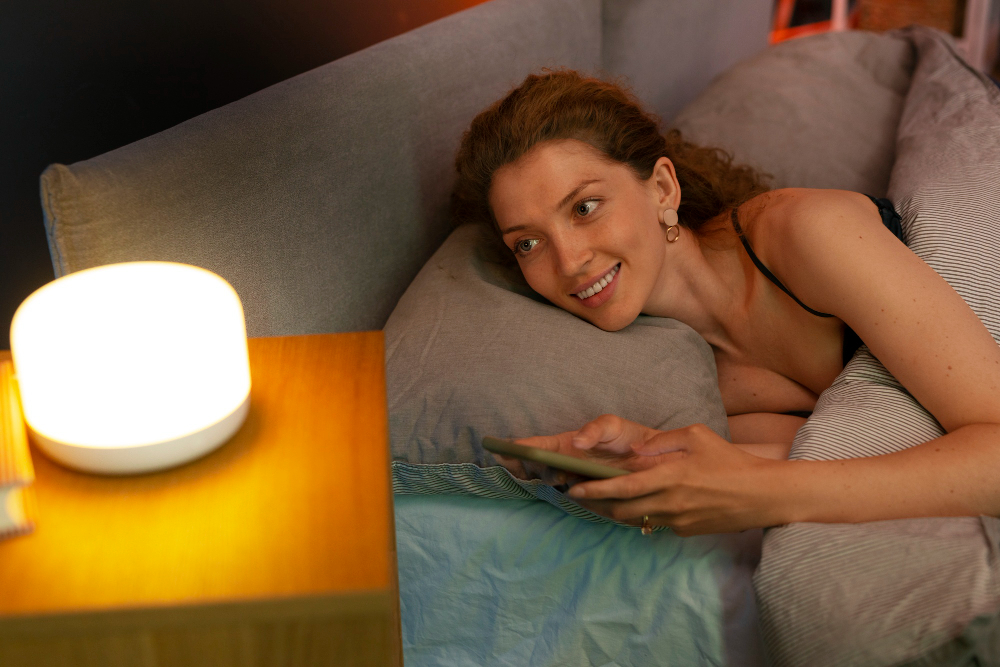Light plays a crucial role in regulating our sleep-wake cycle, also known as the circadian rhythm. Exposure to light, particularly in the evening, can suppress the production of melatonin, a hormone that promotes sleep, making it more difficult to fall asleep and stay asleep. With the prevalence of artificial light sources in our modern world, it’s essential to consider the impact of light color on sleep quality and overall well-being. But which color light is best for promoting restful sleep? Let’s delve into the science behind different light colors and their effects on sleep.
The Influence of Blue Light
Blue light, which is emitted by electronic devices like smartphones, tablets, and computers, as well as LED and fluorescent light bulbs, has garnered attention for its potential to disrupt sleep patterns. Exposure to blue light in the evening can suppress melatonin production, leading to difficulty falling asleep and decreased sleep quality. Additionally, blue light exposure has been linked to increased alertness and cognitive arousal, making it particularly problematic for individuals who use electronic devices before bedtime. To minimize the negative effects of blue light on sleep, experts recommend limiting screen time in the hours leading up to bedtime or using blue light-blocking glasses or screen filters.
The Soothing Effect of Red Light
In contrast to blue light, red light has been shown to have a calming and sleep-promoting effect. Red light has a longer wavelength than blue light, which means it is less likely to suppress melatonin production and interfere with the circadian rhythm. In fact, some studies suggest that exposure to red light before bedtime may help improve sleep quality and duration. Red light therapy, which involves exposure to low levels of red light, has also been explored as a potential treatment for sleep disorders like insomnia and sleep apnea. Incorporating red light into your evening routine, such as using dim red nightlights or lamps, may help create a more sleep-friendly environment.
The Warm Glow of Amber Light
Amber light, which falls somewhere between red and orange on the color spectrum, offers a warm and soothing glow that can promote relaxation and help prepare the body for sleep. Similar to red light, amber light has a longer wavelength than blue light, making it less likely to disrupt the circadian rhythm. Many sleep experts recommend using amber or warm white light bulbs in the evening to create a calming atmosphere conducive to restful sleep. Some smart lighting systems even allow users to adjust the color temperature of their lights throughout the day, gradually transitioning to warmer hues as bedtime approaches.
The Importance of Dim Light
Regardless of the color of light, the intensity of light also plays a significant role in its impact on sleep. Exposure to bright or harsh lighting in the evening can signal to the brain that it is still daytime, inhibiting the production of melatonin and delaying the onset of sleep. To promote better sleep hygiene, experts recommend dimming the lights in the hours leading up to bedtime to signal to the body that it is time to wind down. Using dimmer switches, bedside lamps, or candles can help create a relaxing and sleep-inducing environment in the evening.
Creating a Sleep-Friendly Environment
In addition to choosing the right color and intensity of light, creating a sleep-friendly environment involves other factors such as noise levels, temperature, and bedding comfort. Establishing a consistent bedtime routine, avoiding caffeine and stimulating activities before bedtime, and keeping electronic devices out of the bedroom can also help improve sleep quality. By prioritizing good sleep hygiene and creating a conducive sleep environment, you can optimize your chances of getting a restful night’s sleep and waking up feeling refreshed and rejuvenated.
Finding the Right Balance
In the quest for better sleep, the color of light can play a significant role in regulating our circadian rhythm and promoting restful slumber. While blue light exposure in the evening can disrupt sleep patterns, red and amber light have been shown to have a more calming and sleep-promoting effect. By incorporating dim, warm-colored lighting into your evening routine and minimizing exposure to blue light from electronic devices, you can create a sleep-friendly environment that supports healthy sleep habits and overall well-being. So, when it comes to choosing the best color light for sleep, remember to strike the right balance between comfort, relaxation, and circadian rhythm regulation.



